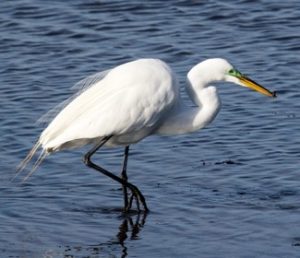Are you “happy as a clam?” The song on this video about a clam’s life in the bay is sure to put a smile on your face!
Steam them, grill them, bake them — no matter how you cook them, Barnegat Bay hard clams are delicious! But what are their lives like before we harvest them for our next dinner?
Hard clams (Mercenaria mercenaria) burrow into the bottom of Barnegat Bay, sticking two siphons up into the water above them. They draw water into one siphon and filter out microscopic organisms called plankton — their food — and shoot the now cleaner water back into the bay through the other siphon. One large hard clam can clean up to 20 gallons of water every day!
Where do baby clams come from? Adult hard clams “spawn” (release eggs and sperm) into the water from May through October when water temperatures are warm enough. Female clams can release millions of eggs during a spawn. The eggs are fertilized as they drift in the water, then free-swimming larvae develop over the next couple of weeks. The larvae develop a “foot” that they use to explore surfaces as they look for a good place to settle and grow to adulthood. (Learn more about clams from ReClam the Bay volunteers, who grow and maintain millions of baby clams and oysters and offer free educational programs at their upwellers throughout the watershed.)
With a grant from the Barnegat Bay Partnership, Rutgers researchers have been studying the movement of hard clam larvae in the bay. 
The researchers asked: “What are the potential patterns of hard clam larval dispersal in Barnegat Bay, and can we find larvae following those patterns?” To try to answer these questions, they designed a project combining computer modeling and field study. Rutgers researchers Dr. Jake Goodwin and Dr. Daphne Munroe used state-of-the-art techniques to simulate larval dispersal (in partnership with USGS colleagues Neil Ganju and Zafer Defne) by using computer hydrodynamic simulations. They then sampled live plankton throughout the bay to compare real larval distributions to the simulated distributions. All of this is an effort to help understand spatial patterns and declines in hard clams over time in the bay, and to help inform future strategies to restore shellfish populations to the bay.
The reseachers also partnered with Mason Gross Documentary Film School, engaging film students in the field and laboratory to document the project. The film students created this short video to help us share the message about the importance of shellfish restoration and healthy coastal ecosystems!



